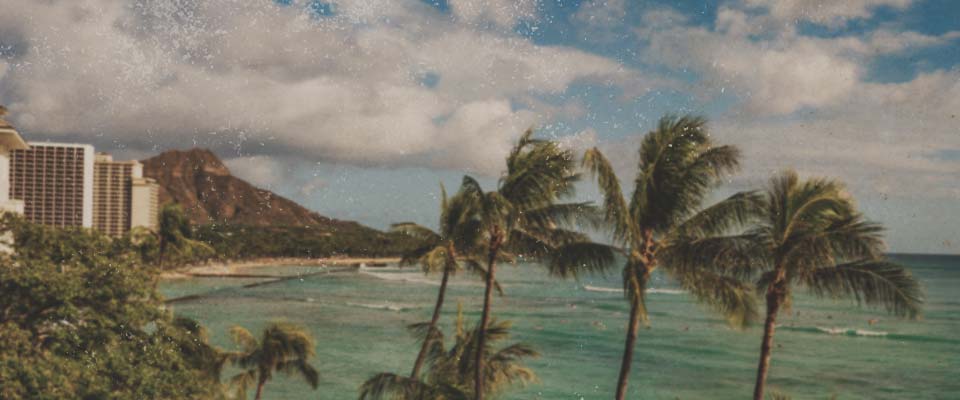



Uncommon History by Daniel H. Case & Rita Aiyoshi
Junior attorneys get the humblest jobs. In 1960, when Dan Case was a junior attorney and his firm, Pratt, Moore, Bortz and Vitousek was moving from the Alexander and Baldwin Building to the then new First Hawaiian Bank Building, he and fellow attorney and Olympic gold medal swimmer Al Stack were assigned the unenviable job of cleaning out old files from the attic in their office.
Poring for days through yellowed folders of old cases for now deceased clients, Case found in one file a treasure — sheets of music written in the hand of Queen Liliuokalani. There was also a hefty packet of correspondence to and from the Queen’s representatives in Honolulu and Washington, D.C. regarding her claim for damages from the United States arising from the seizure of her kingdom. He ran his hand reverently over the music and correspondence, bundled up the file and took it to Trustees of the Liliuokalani Trust. The songs were later included in a book of Queen Liliuokalani’s music, published by Hui Hanai, an advisory body established by the Liliuokalani Trustees. Another file yielded a tracing of the key to the tomb of King Lunalilo, which was turned over to the Lunalilo Trust by Senior Partner Louis Warren.
For more than a century, some of the most important legal proceedings in the Hawaiian Islands have been conducted by the firms through which Case Lombardi traces its roots.
This illustrious history is quietly displayed in framed documents decorating the walls of the firm’s office in the Pacific Guardian Center. A large 1897 street map of Honolulu by M. D. Monsarrat shows the homes of prominent citizens of the day. A land deed is signed in large script by “Kamehameha.” Some documents are written in the Hawaiian language and bear the seal of the Hawaiian Kingdom; others are merely interesting ephemera — such as an Oahu Railroad pass and bills and receipts from old-time Hawai‘i companies no longer in business such as Hollister Drug, Lewers & Cooke, Elite Ice Cream, City Feed Store, Haleiwa Hotel, W. W. Dimond & Co., Fook Tai and Pacific Vehicle & Supply Co. One receipt, which reflects the practice of law before the litigation explosion, reads simply: “One Sugar Mill and Fixtures, Koloa, Kaua‘i, November 29, 1864.” Apparently no more detail was considered necessary.
In 1888, during the reign of King David Kalakaua, W.O. (William Owen) Smith, son of a missionary doctor, hung out his shingle at 66 Fort Street in downtown Honolulu. Smith, born at Koloa, Kaua‘i in 1848, played a prominent role in the annexation of Hawai‘i to the United States, yet later became the trusted friend and advisor to Queen Liliuokalani. The firm today continues to represent the Liliuokalani Trust, now a multi-million dollar charitable trust serving orphaned and destitute children of Hawaiian blood.
During his life, Smith was at various times, sheriff on Kaua‘i and Maui, and President of the Board of Health. He was also deputy attorney general of the Kingdom for seven years, and later, attorney general of both the Provisional Government and the Republic. He was elected to the legislature and served for twenty years through four governments: the Kingdom, the Provisional Government, the Republic and the Territory. During his last two years in office, he was president of the Territorial senate. Nearly every important board of directors in his day, both corporate and charitable, benefitted from his presence.
Roy Vitousek was elected to the Territorial House of Representatives 1923-1939 and served as speaker for four years. He was chairman of the Republican party and a delegate to its national conventions. His work as Chairman of the Commission on Crime was highly acclaimed. He worked tirelessly for the cause of statehood and sponsored definitive legislation in the areas of civil service, labor relations, police organization, workmen’s compensation, unemployment compensation and public welfare. The feat that always aroused the most interest, however, was purely coincidental. He loved flying, and on the morning of December 7, 1941 he happened to be aloft with his son during the Japanese attack on Pearl Harbor. With enemy bombers diving all around him, he managed to land his plane safely with quite a story to tell.
C. Dudley Pratt, of missionary descent, attended Yale University where he was an All-American swimmer. As a boy, he was an Eagle Scout, and after returning to Hawai‘i to practice law, he continued his support of the Boy Scouts. The organization bestowed on him numerous local and national scouting awards. He was the father of the Red Cross Life Saving Program, a deacon and trustee of Central Union Church, and a trustee of Punahou School for thirty-five years. He devoted countless hours to Palama Settlement, the Honolulu Academy of Arts and the Amateur Athletic Union. The business community knew him as “Mr. Rotary”. He served as the President of the Rotary Club of Honolulu and as the Governor of the Rotary District for Hawai‘i. Professionally, he was recognized for his work in real property law, probate and estate planning. He served a term as president of the Hawai‘i State Bar Association.
C. Nils Tavares, born in Pukalani, Maui in 1902, served as Attorney General of the Territory, a post he resigned to become a senior partner in the firm which was renamed Pratt, Tavares & Cassidy. He was a delegate to the Hawai‘i State Constitutional Convention in 1950 and chairman of the Hawai‘i Statehood Commission. He was appointed a United States District Judge in 1960. His community service included terms as president of the Better Business Bureau and Legal Aid Society, which he founded.
Charles E. Cassidy was a former football star at Cornell who became one of Hawai‘i’s premier trial attorneys. While serving in the Public Prosecutor’s office, he assisted in prosecuting the sensational Massie case. He was later appointed a judge in the Oahu Circuit Court. He resigned in 1947 to become a senior partner in Pratt, Tavares & Cassidy. Upon Hawai‘i becoming a State in 1959, Justice Cassidy became a member of the first Supreme Court of the State of Hawai‘i.
Alan C. Kay, a distinguished attorney and former partner, resigned from the firm in 1988 to become a United States District Judge. Judge Kay served on the boards of several leading corporations and charitable organizations prior to becoming a federal judge.
Five of the partners of the firm served as Presidents of the Territorial and then the Hawai‘i State Bar Association, namely Roy A. Vitousek, W. L. Stanley, C. Nils Tavares, C. Dudley Pratt and Daniel H. Case. Pratt was President of the HSBA in 1969 when the annual American Bar Association meeting was held in Hawai‘i for the first time. Neil Armstrong, just back from the moon, was a featured speaker. Case, as president of the HSBA in 1978, was its principal spokesman in support of the adoption of the Judicial Selection Commission in the Constitutional Convention that year. The law was approved by the voters in 1979.
For more than a century, the firm has handled cases involving prominent individuals and events in Hawaii’s history. Among these are:
• Suit to Rescind the Liliuokalani Trust. Queen Liliuokalani executed a trust deed in 1909, creating the Liliuokalani Trust and conveying substantial lands to it. W. O. Smith prepared the documents as the attorney for the Queen and was one of the original trustees along with Curtis Iaukea and Samuel M. Damon. In 1915, Prince Kuhio, as the Queen’s next of kin, was persuaded to file suit alleging that the Queen had been “of weakened mind” or had been unduly influenced at the time she executed the documents; therefore they should be annulled. The Queen and trustees filed demurrers. The Queen forcefully asked for a preliminary hearing to prove her competence. The circuit judge denied all such motions, so the Queen appealed to the Supreme Court which reversed the Circuit Court. Upon the remand, W. O. Smith and his law partner, Louis Warren, successfully defended the Queen and the trustees of the Liliuokalani Trust. The Court’s decision quotes W. O. Smith as trumpeting: “The Queen is sane.”
• Ulupalakua Ranch Shoreline Case. Title to the 1,995 acres of Ulupalakua Ranch on Maui was granted by an 1850 deed from King Kamehameha III. The deed from the king contained, however, “a reservation of a landing place shoreward adjoining Makena Harbor and 60 fathoms adjoining high water mark of Makena Harbor extending inland.” [English translation]. The State of Hawai‘i contended that this language reserved a strip of land 360 feet (60 lineal fathoms) above the high water mark all the way along the entire one-mile seaward boundary, an area of 40-50 acres.
After extensive research, it was discovered that in the early days after the arrival of the missionaries, there were very few surveyors, and so it was not uncommon for officers or seamen from the visiting ships to survey real property and measure property by the fathom (six feet) rather than by feet or rods. Further, there were cases found from the Supreme Court recognizing the use of “square fathoms” (six feet by six feet).
As attorney for the Ranch, Case contended that the reservation intended to reserve an area of 60 square fathoms (2,160 square feet), sufficient for a canoe landing. A study of the Makena shoreline revealed an area looking very much like a former canoe landing and it covered about 2,160 square feet. After hearing all the evidence and personally inspecting the site, Judge Samuel P. King upheld the Ranch’s position, and the land court application was granted, subject to this 2,160 square foot reservation for a canoe landing.
• Hilo Sampan Case. The 1960 Tsunami caused a great deal of damage and loss of life in Hilo and also spawned an interesting legal case. A sampan tied up in Hilo Bay was thrust up the Wailuku River and dumped into an active fishpond owned by Julian Yates. Yates, quite understandably, wanted the boat off his property without loss of fish or damage to the fishpond wall. The boat owner’s insurance company promptly paid off the full amount of the value of the boat but claimed salvage rights, hoping to recoup some of the money.
Yates, however, was one step ahead of the insurer. He sued the insurer, which was the new owner of the sampan, to get the boat out of his pond. He also claimed damages to the pond and possible loss of its fish.
The suit was considered a matter of admiralty law and the federal judge ruled in favor of Yates. During the repair process, Al Stack, who represented the insurance company, engaged the two sitting circuit judges in Hilo to stand at each exit from the fishpond and be witnesses that not one finned fugitive escaped.
• The Lindbergh Case. Because he owned land at Kipahulu, there was an ancillary probate on Maui of Charles Lindbergh’s estate. A man from Georgia named Kerwin filed a probate claim asserting that he was the lost Lindbergh baby who had been kidnapped and never found. Kerwin sought to be treated as a beneficiary as a “pretermitted” child. It was believed that the purpose of the lawsuit against the estate was to (1) obtain a nuisance settlement by causing discomfort to Lindbergh’s wife by taking her deposition and having a trial, or (2) create substantial publicity in anticipation of a lucrative book contract or series of newspaper articles. Dan Case, as attorney for the estate, obtained the dismissal of the claim as a matter of law because Hawai‘i law did not accept the theory of “pretermitted” children at the time of Mr. Lindbergh’s death. The Hawai‘i Supreme Court affirmed.
Source Acknowledgments for photos and images: young W.O. Smith, Smith & Executive Council: Hawaiian Mission Houses Historic Site & Archives; W.O. Smith, King Kalakaua, Queen Liliuokalani, Trust Documents, Aloha Oe, Pearl Harbor, Aliiolani, Alexander & Baldwin Building: Hawai’i State Archives; Roy Vitousek: Dr. Kelly Vitousek; C. Dudley Pratt: The Pratt Family; Justice Cassidy: Kamehameha V Judiciary History Center; Banyan Tree: Lahaina Restoration Foundation; and Lorraine Choy Design.
